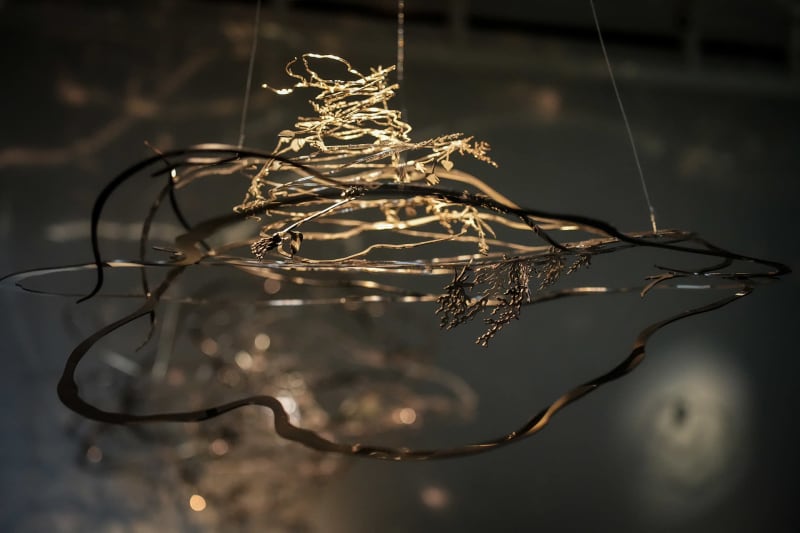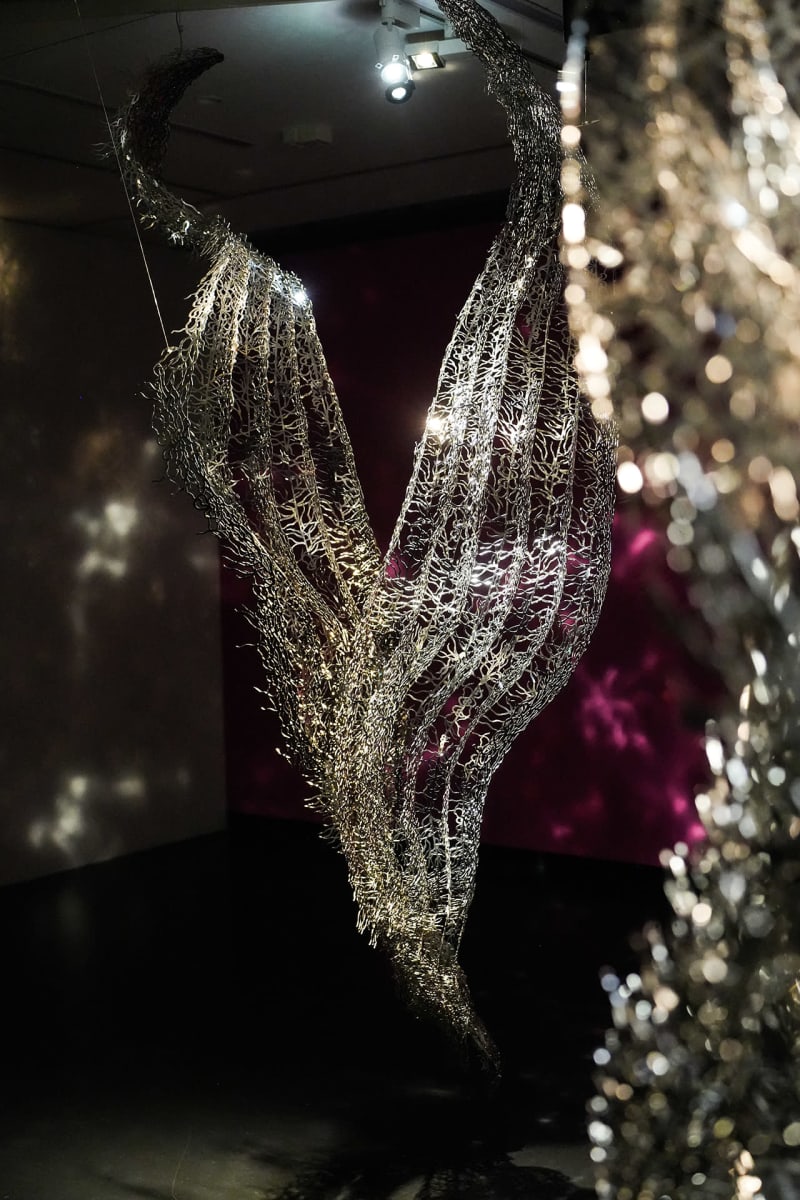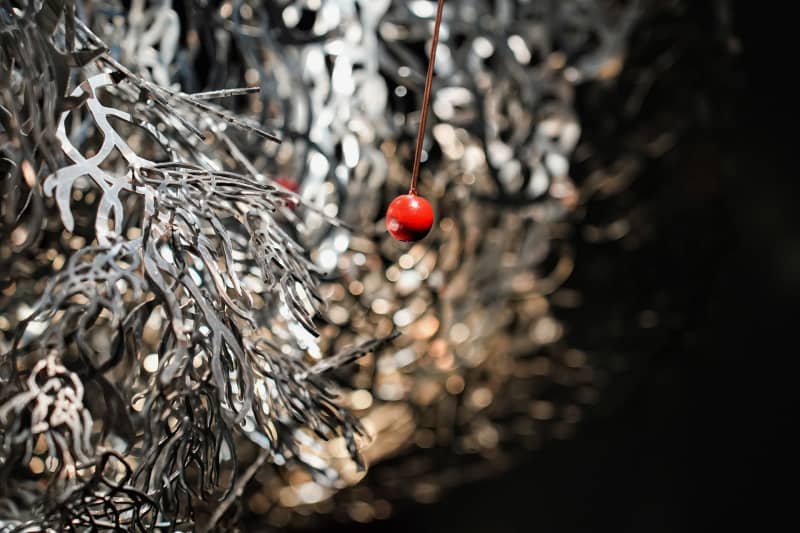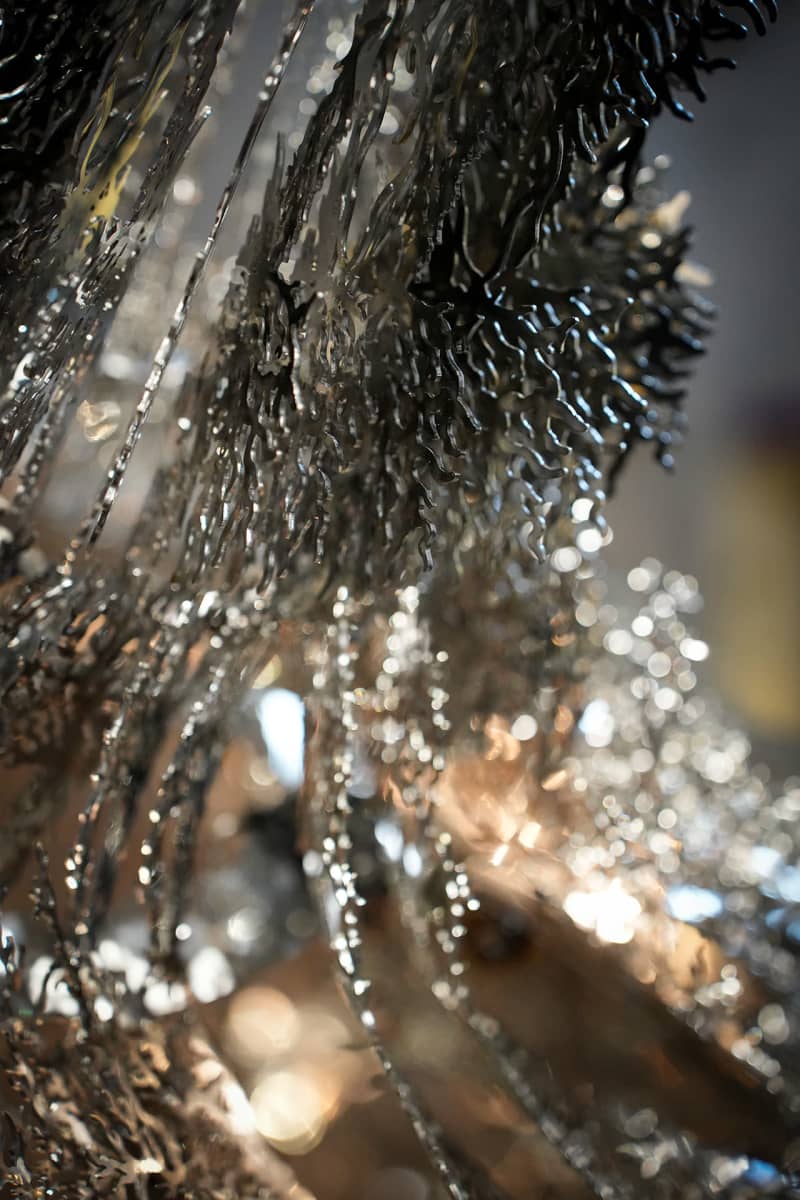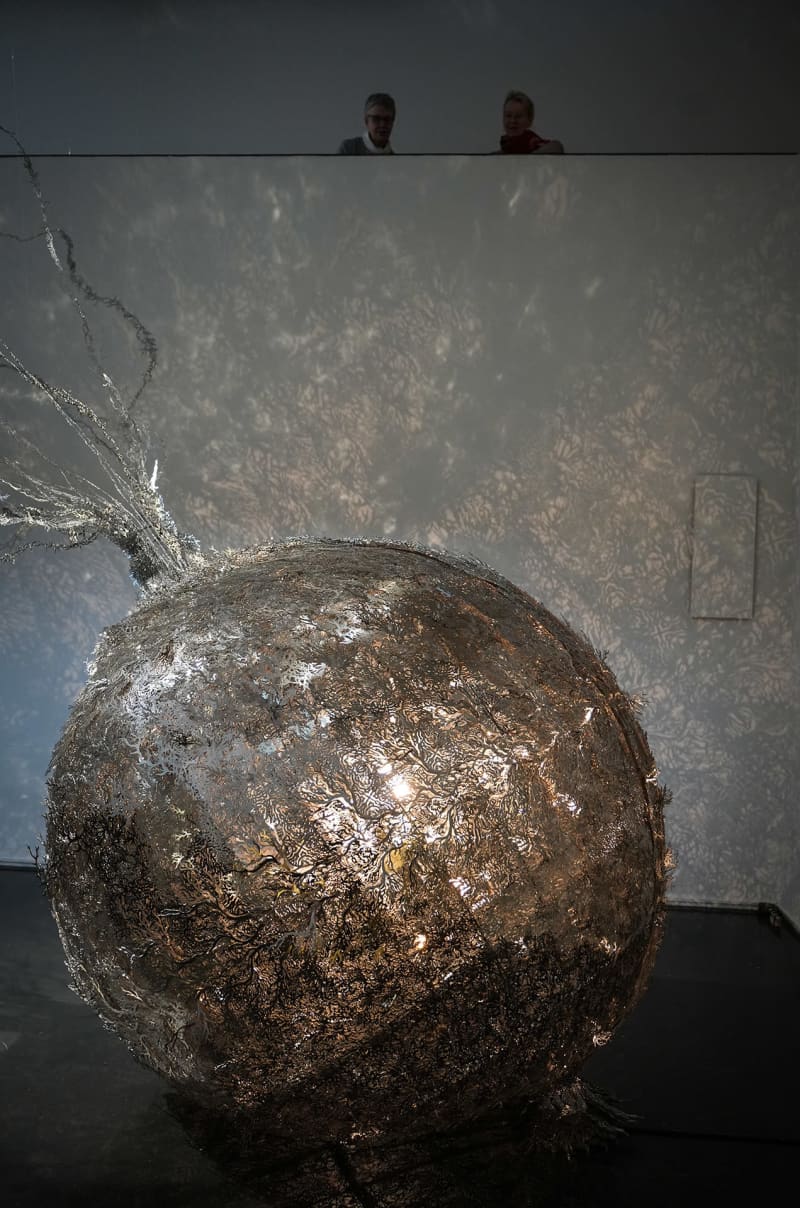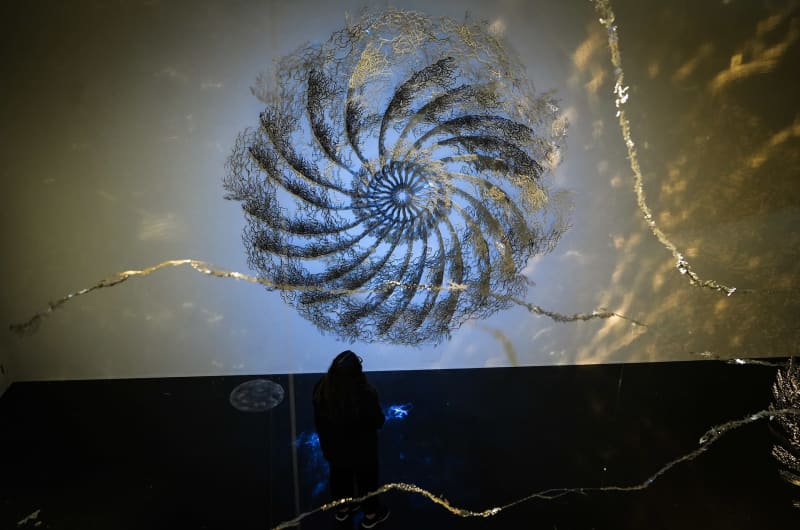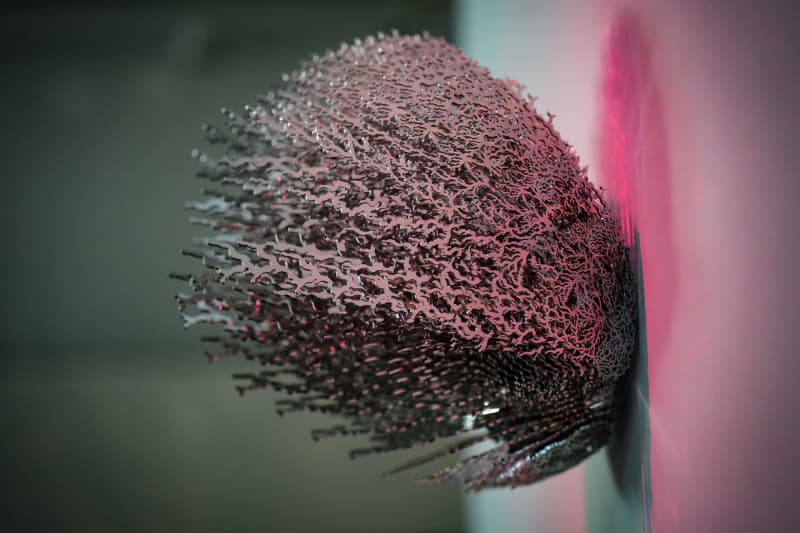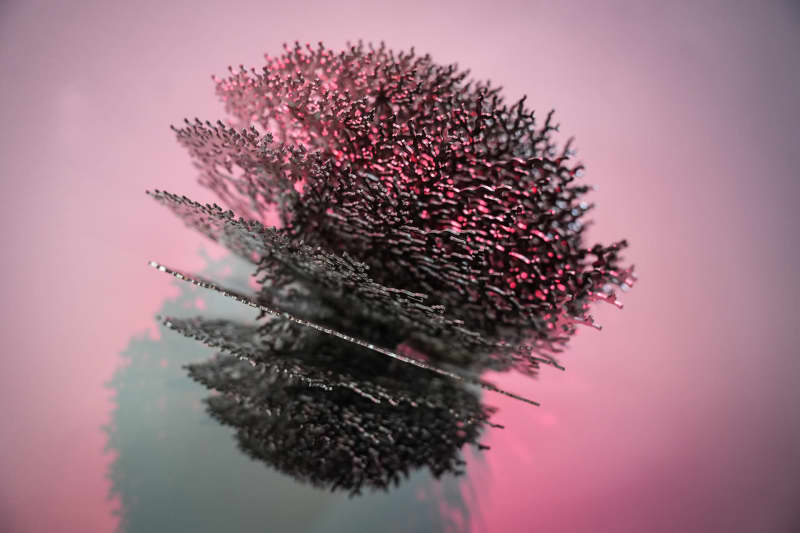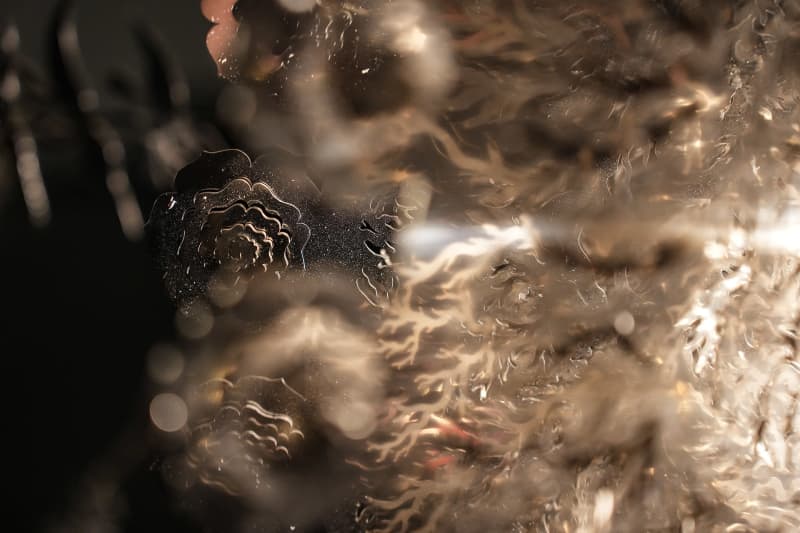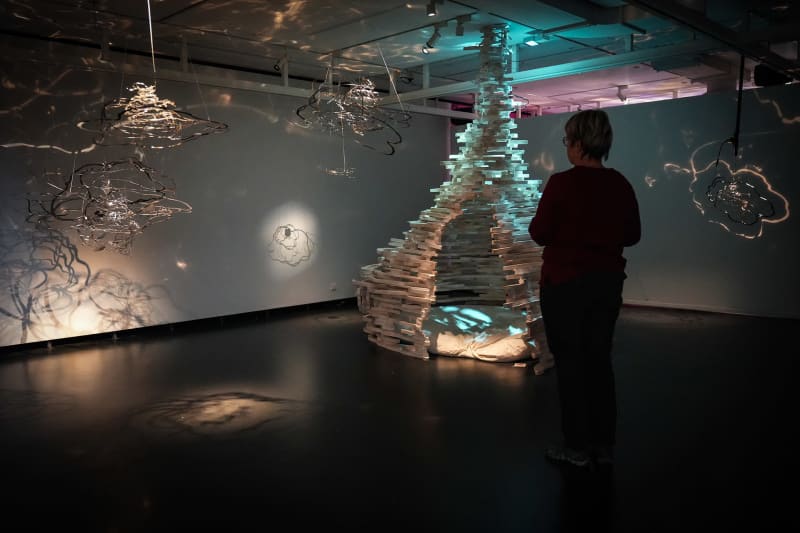Kirsi Kaulanen’s extensive Northern Myriad exhibition fills all three floors of the Kerava Art Museum’s Sinka.
The nine rooms of the Kerava Art Museum are filled with a shimmering, multi-layered steel lace, whose numerous details and intricate ornamentation reflect different patterns, light and shadows on the walls and floor. The soundscape, which hums, squeaks, clangs and occasionally thumps, completes the whole.
– With this exhibition, I have wanted to sculpt the experience of being at the edge of infinity: the experience of being under the northern sky and sinking among the stars. Or when you ski to the top of a mountain and blend into the 360-degree landscape around you,” Kirsi Kaulanen sums up.
Nature is stored in the body’s memory
For Kaulanen, who spent his childhood and youth in Äkäslompolo, Lapland, nature is the primary source of inspiration. In the forms of his sculptures, one can find, for example, the airiness of a single dandelion seed, the complex tendrils of a tree root system or the slender branchlets of lichen. Kaulanen feels particularly close to the organic circular form.
– Actually, this whole exhibition is made up of ornamentation and shapes inspired by the geometry of nature. I have been in nature since I was born and I feel that the forest is my home. When I move in nature, its forms are stored in my body’s memory and become concrete sculptures through my hands. For me, sculpture means exactly this.
The Northern Myriad exhibition also includes the Nature Roof Room, which, according to Kaulanen, is a distress call for the disappearing nature.
– I have carved silhouettes and roots of endangered plants there. As an essential part of the whole, the eight points proposed by the United Nations, which could be used to stop the loss of nature, are also included.
Steel is suitable for rich details
In the 1990s, handmade paper served as the material for Kirsi Kaulanen’s sculptures, after which she switched to plywood and then, for practical reasons, to steel.
– Steel was a logical choice because I wanted to make more delicate, lace-like patterns and build sculptures based on them.
What makes Kaulainen’s works interestingly contradictory is the tension between the material and the subject. From laser-cut steel, multi-layered and lavishly detailed entities have been created, often inspired by organic nature. Since Kaulanen also takes a stand in his art for the preservation of nature, the choice of material for the sculptures required consideration.
– My sculptures last for hundreds of years, so in relation to their weight, their carbon footprint is small. Yes, there is a challenge here, but all matter used by humans takes energy.
– At the moment, laser cutting is used a lot in art, but I still have my own way of diving into ornamentation and lace. For me, abundance is not a crime but a requirement.
When the invisible and visible worlds come together
In addition to nature, the sculptures in the Pohjoinen myriad exhibition also have references to Finnish ancient faith. For the six-meter-high sculpture, pine roots and birch trunks have been collected from logging sites. In Finnish mythology, sammas means a pillar of the world, which connects invisible and visible reality.
– Ancient faith is part of our tradition – we are in no way cut off from our past, but it is always present and involved. For example, seita stones are still in use. They are places of strength.

Dreams and the subconscious are also important things to Kirsi Kaulasen.
– Many of my artistic ideas have been born in dreams, and meditation has been a favorite hobby of mine for many years.
But then what is the role of the viewer: how should the rich and metallic glowing universe of the Northern Myriad exhibition be experienced?
– This is an exhibition to be experienced more with the heart than with the mind, Kirsi Kaulanen sums up.


